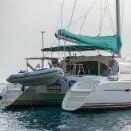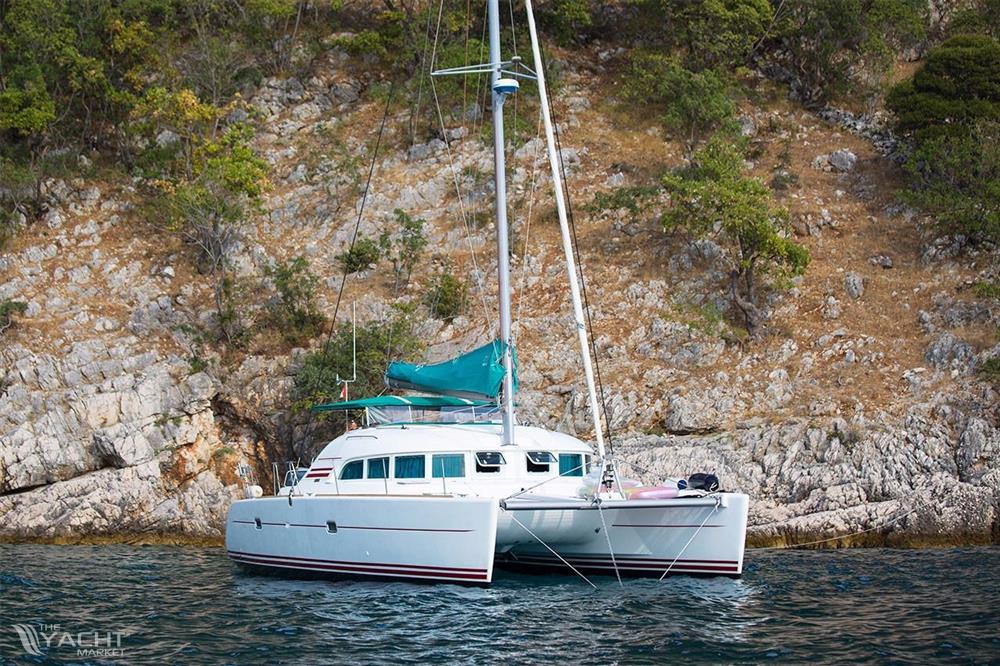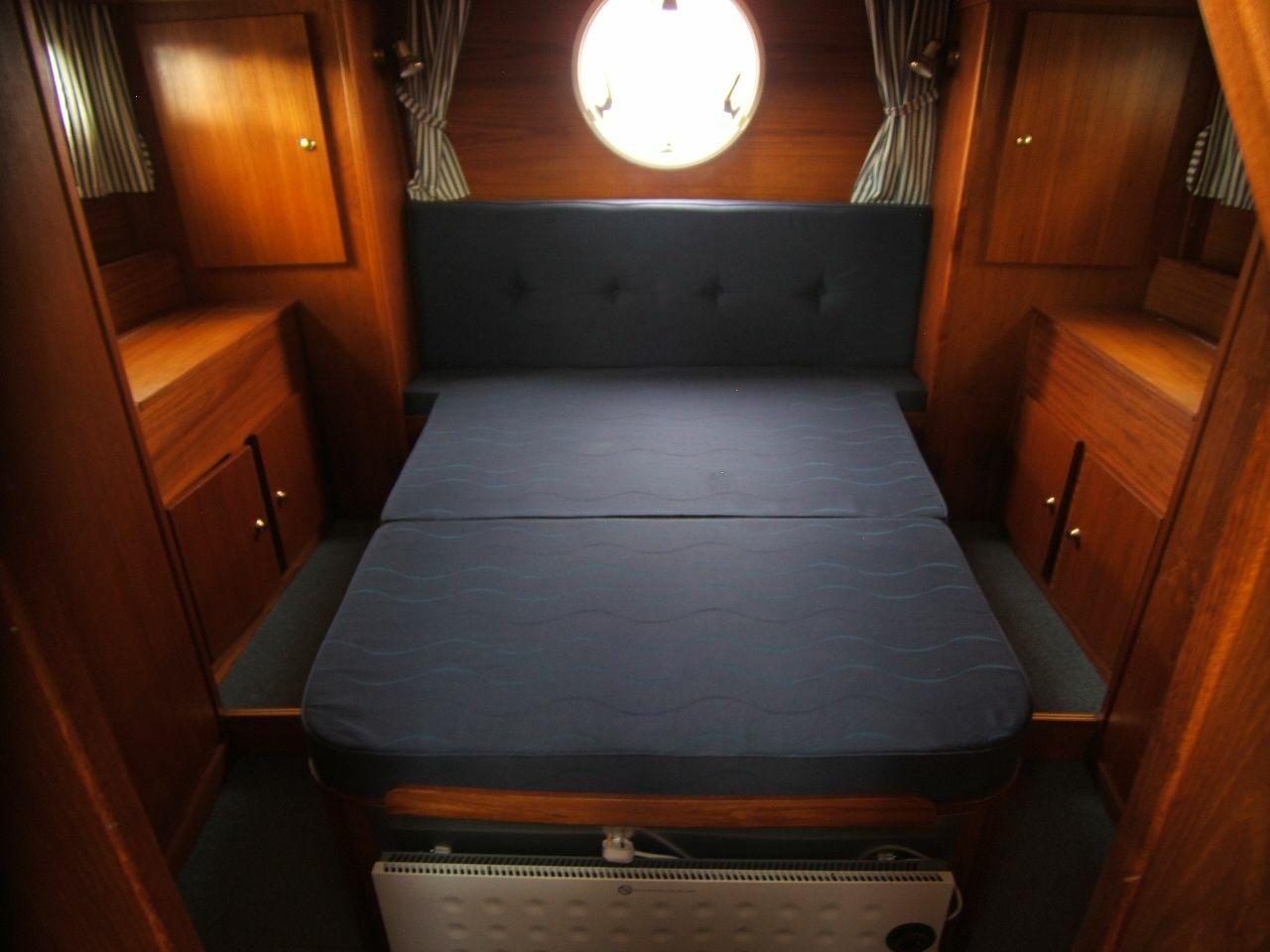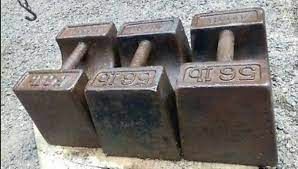-
Posts
41,857 -
Joined
-
Last visited
-
Days Won
129
Content Type
Profiles
Forums
Events
Gallery
Blogs
Store
Everything posted by Alan de Enfield
-
I have a pair of exactly the same "Shore Power Isolators' my measured voltage difference between the input and output is 0.8 volts. I am using standard 14.6 volt regulated HC-Cargo Alternators
-
You might be lucky and he may reply, but the thread is 13 years since the last posting. My Ford 2725E idle at about 800rpm but that may not be much help. Try speaking to Lancing marine, thet are the marinisation experts on Ford engines. Flipbook (lancingmarine.com)
-
No they are not, it is a combination of being on the 'wrong' waterways and ignorance and inexperience. As a comparison, It is not normal to learn to drive in an HGV, in the narrow Cornish country lanes - it would 'normally' be something like : Moped / Motorcycle Small Car Big car Car & trailer / caravan LGV HGV (40 years of Narrow and Wide boating on the sea, the canals and the rivers., I have nothing against anorexic boats, they are perfect for what they were designed for, and hopeless in other areas for which they may be unsafe. Fat-boats are perfect for the wide deep commercial Canals and Rivers and a 'disaster' on the narrow canals).
-
I think it'll be more a case of getting the hotwater into the cauliflower and then using that. The Eber / Webby are not instantaneous water heaters.
-
It is surprsing what those few extra feet in width from an 'anorexic-boat' can make. Life is so much more comfortable, if you are happy with restricted (just 1000 miles ?) of cruising there is no reason to go 'skinny'.
-
On waters designed for 'big boats' the mooring fees tend to be the same irrespective of beam, except, we do tend to get charged a 25% (ish) premium for our big boat (23 foot beam) if going onto pontoon moorings in a marina as we take up 2 spaces. On our 14' beam boat the bed is about 5' 6" wide and 6' 6" long, with dessing tables & wardrobes each side, with an en-suite shower room on the Port side and a Toilet and wash basin on the Starboard side. Headroom ~ 6'.
-

Bow thruster - battery type; and charging from shore power
Alan de Enfield replied to Hawksbill's topic in Boat Equipment
That may depend on who is 'on the button'. I have heard, and seen, a few NB's steered by the bow thruster, you can hear them coming half-an-hour before you see them -
We could always have a get-together and do the Conger.
-
Who are you codding ?
-
No, it 'doesn't hold a candle' to the fish jokes - they are in the the correct plaice
-

Recommendations/advice needed: get yale locks fitted?
Alan de Enfield replied to A Mad Belgian's topic in Living Afloat
Maybe as the OP hasn't visited the forum for the last 3 months, she solved the problem, or, no longer has a boat, or London has 'done for her'. -
If the picture is a link, it isn't working for me, if there should be something else (a link) then there isn't.
-
Which bridge ? Do you investigate every bridge and tunnel on the system ? The lowest 'roof' I found was the Harecastle tunnel where I had to go thru on my knees with my eyes just peeping over the cabin roof, never had to do that on any bridge we came across. Guess we will just have to disagree on the usefulness of the dimension.
-
I am not aware of any single term, it is an addition of the two 'drafts' (Air draft and Water draft). I cannot see why there would be a term for that measurement as what use would it be ? If the BC is (say) 10 foot, (8 feet air + 2 feet water) that doesn't mean that a boat with a 3 foot draft and a 7 foot air draft will fit, neither does it mean that a boat with an airdraft of 9 feet and a draft of 1 foot will fit (as if the water depth is 2 feet there will be 1 foot of 'unused' BC. Everything I have seen from both sea-going charts to C&RTs charts / spreadsheets show the two dimension seperately - much in the way that you need to think and measure 3-dimensionally for canal dimensions Width, Height and Depth and you need to draw a 'box' of your dimensions - it doesn't mean that your boat will pass at the maximum of all dimensions. Taking my schematic - if your height (air draft) is at maximum then you cannot use the maximum width of the bridges.
-
I was not involved in the building of my boat, it was a Reeves build. The space under the floor was just about big enough to slide my hand in 'flat' - maybe a little over an inch. On previous NBs I have been able to reach right under the floor up to my shoulder - maybe 5+ inches between base plate and underside of the floor. They had two thicknesses of 2" paving slabs with space above. The only ballast in the Reeves was a couple of potato-weights on the counter and in a couple in cupboards along the sides to counter balance the galley and bathroom. 20mm base plate boats are being built. I have seen them advertised but not really interested now so have not made a note of who is doing it.
-
It means that the floor can be substantailly lower because the need for loose ballast (concrete slabs, pig-iron etc) is minimised to only needing to counter-balance any furniture and fittings, and, that can generally be achieved with one or two 56lb 'potato weights' in the bottom of cupboards or under the bed etc. The weight of the 13mm base plate is (virtually) sufficient to ballast the boat correctly.
-
You asked the question about 'considering the wiring' - are you referring to the wiring from the alternator to the battery / split charger / batteries, or the wiring from the battery charger to the batteries ? The wiring from the alternator the 'big thick black one' will be fine is you replace the 70a alternator with another 70a alternator, and, probably OK if you so decide replace it with a 90a alternator (but do not understand why you would) If you replace the battery charger with a bigger one then you will need to use wires suitable for the current of the new charger AND sized to prevent volt drop and that can only be determined by the distance of the charger from the batteries, and the current rating of the charger. For example a 50 amp charger should be wired using 16mm2 but if the charger is some distance away from the batteries, and you still want 'maximum' voltage to get to the batteries you may need to go up to 25mm2 if your battery charger is 5 metres from the batteries.
-
Which wiring ?
-
It is always difficult explaining to people with little knowledge of batteries that if you need to put 70Ah into your battery, that, running your 70 amp alternator for one hour will only 'put in' a fraction (maybe 25%) of what is needed - you get : It is a 70 amp alternator there fore it must put in 70 amps. Hopefully repeated spreading of 'the word' will help to increase boaters knowledge.
-
My 70amp alternator was quite happy charging my 6 x 230Ah batteries.
-
You could replace it by a 90 amp, or even 100 amp but any more and you are likely to need to start replacing pulleys for different contoured belts. Without investing in all sorts of electronic wizardry you will get very little time saving in recharging you batteries with a 100amp compared to a 70 amp as the batteries control the charge rate and after the first 20-30 minutes charging at high currents they demand that the alternator reduces the current to (example) 50 amps, then 10 minutes later to 30 amps, then 30 minutes later to 20 amps, and then progressively lower and lower currents to around 2 or 3 amps. It will take many hours to get from (say 85% charge to 99.9% charge) and that is because the battery is demanding a smaller and smaller current. This will not change if you a 70 amp alternator or a 700 amp (exaggeration) alternator. This is a funtion of ALL Lead Acid batteries - spend £5k on lithium batteries and the whole thing changes. Suggestion - replace your 70 amp like for like and invest is 300 watts of solar. Run your engine for the bulk-charge in the morning for (say) 1 hour and let the solar 'trickle' charge the batteries for the next 12-15 hours* *This will work in Summer time but you will need extended engine or generator time in the Winter. Edit for spooling errurs
-
Amended for you.
-
Maybe its a BOGOF deal ?
-
No it isn't, it is just a coincidence that they both have identical 'details and descriptions', are both for sale by the brokers with the same name & phone numbers and are both in the same location. It is so 'freaky' it must be the collision of parallel universes.
-
C&RTs reporting suggests different & they have 'backed down' on very little from the original plans - surprise surprise. This is (apparently) the final decision regarding the placement of the moorings and safety zones : Water safety zones along Lee Navigation | Canal & River Trust (canalrivertrust.org.uk) The inititial proposals showed where moorings would be restricted to single narrowbeam or widebeam/double moored boats, but we are initially implementing the existing ‘no mooring’ rules, and will discuss other measures with the new advisory forum we’ll be forming. We understand that some reported a loss of 550 mooring spaces in the initial proposals, the 550 number had been calculated based on all mooring space being double moored and did not include any space between moored boats. Even now, not all space in the Water Safety Zones is or can be double moored, and boats do not moor without some space between them. The 550 lost mooring space figure was an exaggeration that did not reflect the current mooring space nor the proposed moorings space. Although there will be some restrictions on where boats can moor to ensure that a safe navigation width is maintained, there will still be lots of mooring space. In the Broxbourne water safety zone, there will be 1824 metres (5984 ft) of mooring space In the Lower Lee water safety zone, there will be 4529 metres (14,858ft) of mooring space In the Broxbourne Zone this is equivalent to towpath mooring space for over 132 x 65ft boats and in the Lower Lee zone this is equivalent to towpath mooring space for over 411 x 65ft boats. The average number of boats we sight in the Lower Lee section is 352, maximum sighted 387. The average number of boats we sight in the Broxbourne section is 42, maximum sighted 71.






